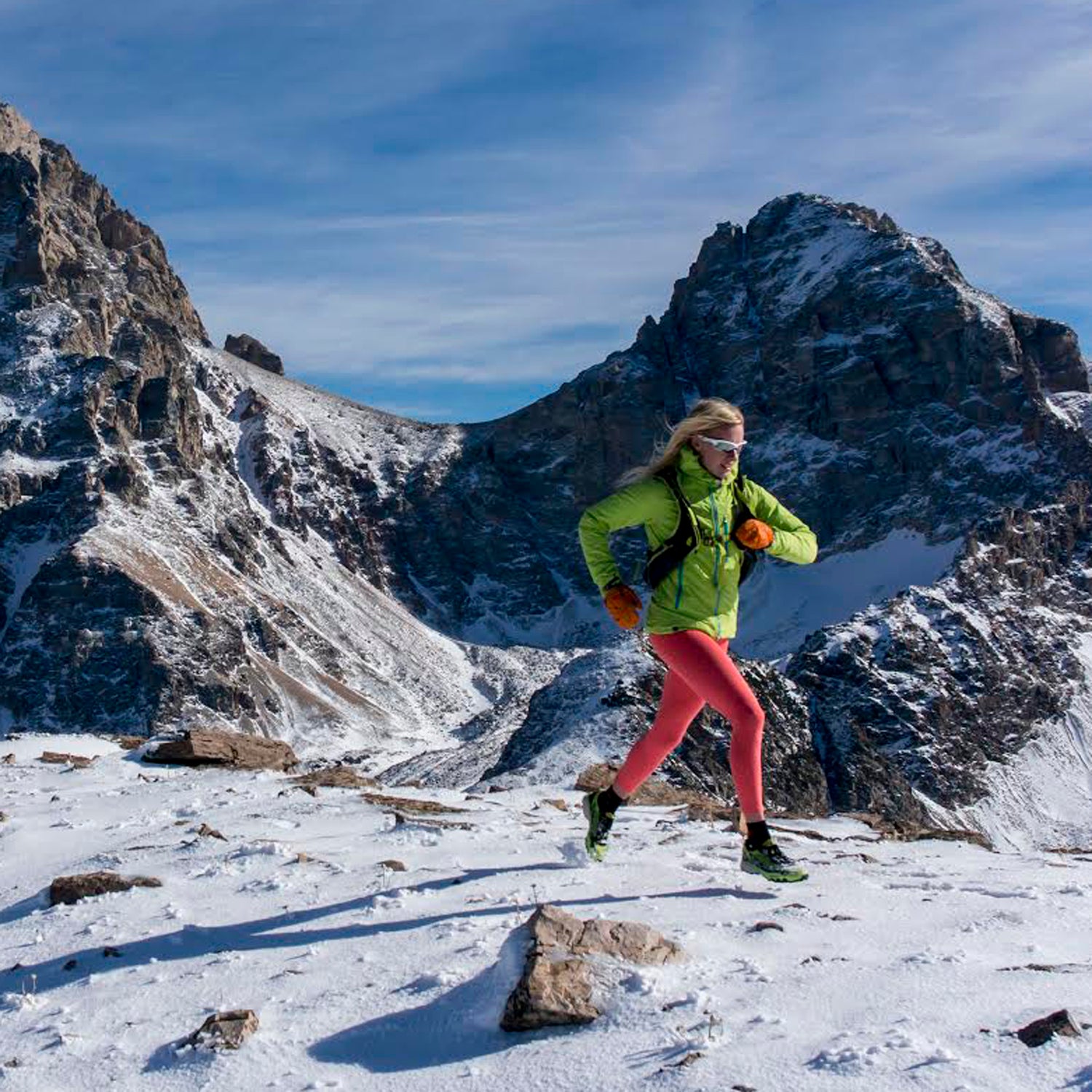High-output, endurance activities demand smart eating if you want to avoid the bonk, especially in winter when our bodies burn calories just trying to stay warm.
Ski mountaineer , 30, has mastered the art of eating on the fly. A member of the 2014 U.S. World Cup Ski-Mo team (she placed 29th) and one of the top-ranked American athletes, Edwards transitions to ultrarunning and racing in the summer. “Both sports complement each other so well. Ski-mo is a way to give your joints a break, but still keep up the intensity. You’re doing so much vert that when I come off ski-mo, I don’t skip a beat.”
Her equipment may change but her well-dialed nutrition strategy remains the same year round. Here are five of her—and our—favorite feeds for hard-charging girls on the go.
Hammer Gels
Whether she’s running or skiing, gels are a staple of Edward’s training regimen. With 80 calories and 21 grams of carbs, ‘s Raspberry and Tropical-flavor gels ($1.40)—her faves—provide fast, easily-digestible fuel that won’t freeze in your pocket and only two grams of sugar (bye bye, sugar crash). “No matter what I’m doing, I bring gels, especially on really long days,” says Edwards. “I’m so conditioned on them.” After a breakfast of steel-cut oats or a bagel with almond butter, she’ll eat one 15 minutes before her workout, another after an hour, and then one every 30 minutes.Â
SPORTea
It can be challenging to hydrate well in winter when cold conditions put the kibosh on your body’s drive to drink. When she’s riding the lifts and skiing inbounds, Edwards often stashes a thermos of ($8.98 for a 20-count box) in her backpack. The naturally decaffeinated green-tea blend is the ideal winter energy drink, a high-performance, citrusy brew of electrolytes and herbs, including potassium, ginger, and Siberian eluthero (aka ginseng), which is known for providing an energizing boost. Bonus: One bag contains your recommended daily allowance of Vitamin C, and no added sugar or preservatives. “I have a hard time drinking sports drinks like Gatorade. They’re usually too sweet for me,” says Edwards. “SPORTea is easy on my stomach. I drink it hot in the winter and cold in the summer.” On long days in the backcountry, she’ll fill a with tea and tuck it into her speed suit to keep it from freezing.
Kind Fruit & Nut Bars
It’s hard to believe ‘s Dark Chocolate Cinnamon Pecan bar, a thick, crackly layer of dark chocolate drizzled over protein-packed nuts, has 200 calories and only five grams of sugar. The perfect mix of sweet and salty, it’s by far the tastiest and least energy-bar-like-bar on the market, with a chewy-crunchy, Snickers-esque texture. Like all Kind snacks, it’s also GMO- and gluten-free. On cold days riding the lifts, we’re partial to the Dark Chocolate Mocha Almond—a mid-afternoon pick-me up in your pocket.
Organic Honey Stinger Waffles
As part of her endurance nutrition system, whether she’s training or racing, Edwards eats something fatty every two hours. Most days, her treats of choice are ($1.20), thin, chewy, organic wheat wafers spread with a glaze of honey. Each waffle has seven grams of fat and 160 calories, a good hourly caloric input to shoot for during ultra-endurance events. The waffles will harden and become chewier in cold temperatures, but because they’re so slim, they’re easier to bite in frigid conditions that nut-chocked bars.
AB&J
Edwards swears by whole foods for the longest hauls. Four hours into any hard effort, she’ll eat an almond-butter and jelly sandwich on wheat bread, or, during supported races with well-stocked aid stations, chicken noodle soup. “These are easier for me to digest than most bars,” she explains. Not to mention cheaper and simple to DIY. Put the soup in a thermos and you’re good to go for an all-day tour above tree line.


